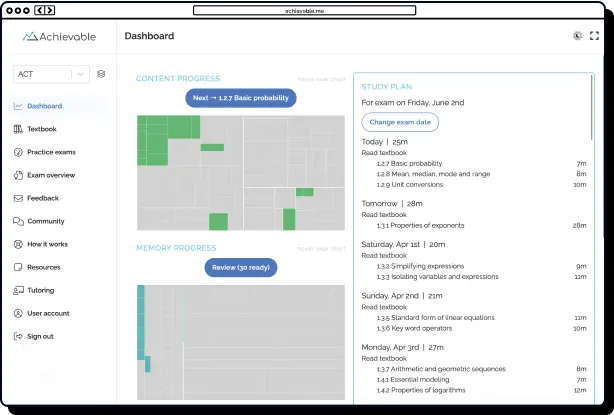
USMLE Prep: Understanding opioid withdrawal




Table of contents
- Overview: Why understanding opioid withdrawal symptoms matters for the USMLE
- Timeline of opioid withdrawal
- Classic opioid withdrawal symptoms
- Early Symptoms (6 - 24 hours)
- Later symptoms (24 - 72 hours)
- Key differentiators (vs. other withdrawals)
- Pathophysiology
- Treatment of Opioid Withdrawal
- Non-pharmacologic support:
- USMLE tips and sample question strategy
- Conclusion
Opioid withdrawal is a high-yield, high-impact topic that appears repeatedly on the United States Medical Licensing Examination (USMLE), especially in Step 1 and Step 2 CK. It draws on a deep understanding of pharmacology, neurophysiology, and clinical reasoning, making it a prime example of how foundational science meets real-world patient care. You’ll often see it in questions related to substance use disorders, emergency medicine, or toxicology, where quick recognition and decision-making are critical.
While opioid intoxication is marked by classic signs such as pinpoint pupils and respiratory depression, withdrawal presents the opposite clinical picture, marked by agitation, dilated pupils, gastrointestinal upset, and autonomic hyperactivity. These symptoms result from a rebound in central nervous system activity after the abrupt removal of opioid effects. Being able to accurately recognize, distinguish, and manage opioid withdrawal isn’t just crucial for scoring points on the USMLE. It’s a real-world skill that plays a vital role in patient care.

Overview: Why understanding opioid withdrawal symptoms matters for the USMLE
Opioids, a class of drugs that include heroin, morphine, oxycodone, and fentanyl, are common features of the USMLE Step 1 pharmacology and neurobiology sections. These substances act primarily on mu-opioid receptors in both the central and peripheral nervous systems, leading to classic effects such as analgesia, euphoria, and sedation. Chronic opioid use can result in the development of physical dependence and increased tolerance. When opioid use is abruptly reduced or discontinued, individuals experience withdrawal symptoms due to rebound hyperactivity of noradrenergic pathways and underlying neurochemical adaptations. After the body becomes dependent on opioids, discontinuing drug use can be a severe shock to the system.
For optimal performance on the USMLE Step 1 exam and to achieve a passing score, understanding opioid withdrawal symptoms and their mechanisms is vital. The USMLE assesses your ability to:
- Identify the characteristic presentation of opioid withdrawal symptoms
- Accurately distinguish these symptoms from withdrawal syndromes associated with other substances (such as alcohol or benzodiazepines)
- Comprehend core pharmacological mechanisms relevant to opioid dependence and withdrawal covered in USMLE Step 1 sections
- Select appropriate management strategies for opioid withdrawal

Timeline of opioid withdrawal
- Short-acting opioids (e.g., heroin): Symptoms begin 6 - 12 hours after last use, peak at 24 - 48 hours, and subside in 4 - 7 days
- Long-acting opioids (e.g., methadone): Symptoms begin 24 - 48 hours after last use and may persist for up to 10 - 14 days
Classic opioid withdrawal symptoms
Withdrawal symptoms can be described as “FLU-like symptoms plus sympathetic overdrive.”
Early Symptoms (6 - 24 hours)
- Anxiety and restlessness
- Yawning
- Lacrimation (tearing)
- Rhinorrhea (runny nose)
- Sweating
- Dilated pupils (mydriasis)
- Piloerection (“goosebumps”)
Recognizing these early withdrawal symptoms is crucial for answering USMLE Step 1 questions and preparing effectively with quality USMLE practice questions.
Later symptoms (24 - 72 hours)
- Abdominal cramping
- Nausea, vomiting
- Diarrhea
- Muscle aches (especially back and legs)
- Insomnia
- Fever
- Hypertension, tachycardia
- Irritability and dysphoria
The mnemonic device, “Yawning & RUNS,” can help you memorize these common elements of withdrawal:
- Yawning
- Rhinorrhea
- Unwell (flu-like)
- Nausea, vomiting
- Sweating
Key differentiators (vs. other withdrawals)
Understanding withdrawal symptoms from common substances is crucial for mastering USMLE Step 1 topics, since recognizing key features helps with clinical decision-making. Below is a comprehensive chart tailored to high-yield information often tested on Step 1 exams:
| Substance | Pupil size | Seizures? | Timing | Unique features |
|---|---|---|---|---|
| Opioids | Dilated | No | 6 - 24 hr | Yawning, piloerection, GI upset |
| Alcohol | Normal → Dilated | Yes | 6 - 24 hr | Hallucinations, tremors, seizures |
| Benzodiazepines | Normal → Dilated | Yes | 1 - 4 days | Anxiety, tremor, seizures, rebound insomnia |
| Stimulants (crash) | Normal | No | Hours | Fatigue, hypersomnia, depression |
By paying attention to these withdrawal features and pupil response changes, medical students can recognize patterns and easily identify these common presentations.
Pathophysiology
- Opioids inhibit the locus coeruleus (norepinephrine-producing area in the pons).
- With chronic use, the brain adapts by upregulating adrenergic output.
- When opioids are removed, this system becomes hyperactive, leading to autonomic symptoms (sweating, diarrhea, tachycardia, etc.).
Treatment of Opioid Withdrawal
Important: Opioid withdrawal is often intensely uncomfortable, but it is not life-threatening: this is in contrast to withdrawal from substances like alcohol or benzodiazepines, which can pose severe medical risks. It’s important to understand what medications are used to treat the intense symptoms that accompany withdrawal.
Pharmacologic management of opioid withdrawal symptoms includes:
- Clonidine: An α2-agonist frequently used to manage opioid withdrawal symptoms, helps reduce sympathetic overactivity such as sweating and tachycardia.
- Loperamide: Recommended for controlling diarrhea, a common opioid withdrawal symptom.
- NSAIDs: Useful in treating muscle aches and pain.
- Methadone: A long-acting opioid agonist, plays a key role in symptom management.
- Buprenorphine: A partial opioid agonist; safe and effective, commonly used in outpatient settings
Non-pharmacologic support:
- Hydration
- Nutritional support
- Reassurance
- Referral to addiction services
USMLE tips and sample question strategy
- Look for questions that reference a patient with a history of heroin or prescription opioid use who presents with nausea, diarrhea, mydriasis, and flu-like symptoms.
- Watch out for key distractors like benzodiazepine or alcohol withdrawal, which can be dangerous and require different treatment.
- Know that symptoms are treated supportively, and that withdrawal is not fatal.
Sample USMLE-style question:
A 29-year-old man presents to the ED with abdominal cramping, nausea, vomiting, muscle aches, and dilated pupils. He reports daily heroin use but stopped abruptly 24 hours ago. Vitals show tachycardia and mild hypertension. Which of the following medications is most appropriate to alleviate his symptoms?
A) LorazepamB) ClonidineC) FlumazenilD) Naloxone
Correct Answer: B) Clonidine

Conclusion
Mastering the identification of opioid withdrawal symptoms for USMLE Step 1 questions is crucial for distinguishing this condition from other withdrawal syndromes. For USMLE Step 1 success, you need to recognize the clinical features of opioid withdrawal, understand its pathophysiology, and compare it with other substance withdrawal presentations. While opioid withdrawal can appear dramatic, it is primarily diagnosed clinically and managed with supportive and empathetic care. Reviewing study materials and practicing with high-yield USMLE practice questions will reinforce your ability to answer related questions confidently on exam day.

